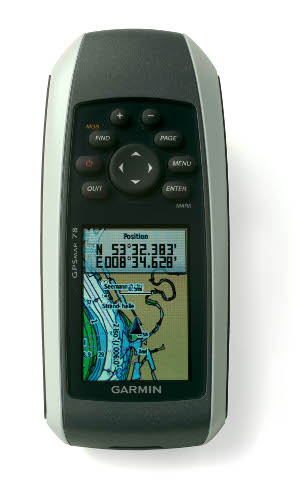Heute navigieren fast alle Schiffe nach dem Global-Positioning-System, kurz GPS. Braucht man auf See daher überhaupt noch Chronometer?
Nowadays almost all ships navigate using the Global Positioning System (GPS). This raises the question of whether there is any need at all for chronometers at sea.
Zur Positionsbestimmung auf See ohne Nutzung der Himmelskörper gab es auch bereits vor GPS verschiedene Funkortungsverfahren. Die astronomische Navigation mit Sextant, Chronometer und entsprechenden Tafeln ist jedoch die einzige vom elektrischen Strom unabhängige Navigationsmethode. Dennoch wurde die Ausrüstungspflicht der Schifffahrt mit astronomischen Instrumenten aufgehoben. Der Bedarf an Chronometern besteht damit nicht mehr.
Even before GPS, there were methods of determining position at sea by radio and without reference to celestial bodies. However, astronomical navigation with its sextant, chronometer and almanacs is the only navigation method which does not rely on a supply of electricity. It is nevertheless no longer mandatory for ships to be equipped with astronomical instruments, and so there is no longer a demand for chronometers.
Auch GPS-Geräte lassen sich als Zeitanzeige verwenden. Ihre Synchronisation mit der Weltzeit im Jahr 1980 ist der aktuellen Zeit inzwischen zwar um ca. 16 Sekunden voraus, aber die exakte Übereinstimmung der Zeitangabe auf GPS-Geräten mit der aktuellen astronomisch angepassten Weltzeit wird über Korrekturwerte im empfangenen GPS-Signal gewährleistet.
GPS devices can also be used as timepieces. The system was synchronised with UTC in 1980 and is now actually about 16 seconds ahead of the universal standard, but accuracy is ensured through adjustments made to the GPS signal.

GPS-Gerät Garmin GPSMap78, Garmin, Olathe (Kansas/USA) 2011.
Heute ist es möglich, in einem derart kleinen Gerät die auf wenige Meter genaue Position direkt auf einer elektronischen Seekarte anzuzeigen. Auch die Zeit lässt sich darstellen, aber sie ist zur Berechnung der Länge nicht mehr nötig.
Garmin GPS device, GPSMap78, Garmin, Olathe (Kansas/USA) 2011.
Today these small devices can plot the holder's exact position on an electronic map to within a few metres. It also shows the exact time, but this is no longer required to determine longitude.
Heute ist es möglich, in einem derart kleinen Gerät die auf wenige Meter genaue Position direkt auf einer elektronischen Seekarte anzuzeigen. Auch die Zeit lässt sich darstellen, aber sie ist zur Berechnung der Länge nicht mehr nötig.
Garmin GPS device, GPSMap78, Garmin, Olathe (Kansas/USA) 2011.
Today these small devices can plot the holder's exact position on an electronic map to within a few metres. It also shows the exact time, but this is no longer required to determine longitude.
GPS wurde in den 70er bis 80er Jahren des letzten Jahrhunderts vom US-Verteidigungsministerium für militärische Anwendungen entwickelt. Durch die freie Nutzbarkeit der Satellitendaten setzte es sich rasch auch für See- und Landnavigation durch. Heute ist es das wichtigste Ortungsverfahren weltweit.
GPS was developed in the 1970s and 1980s by the US Defence Department. The free accessibility of satellite data soon made it an important navigation tool on land and at sea. It is now the most important navigation system worldwide.
Die erdumlaufenden Satelliten – gegenwärtig über 30 – senden ständig ihre Position und die Zeit. GPS-Empfänger messen die Laufzeitdifferenzen der übertragenen Signale und errechnen daraus ihre eigene Position. Je mehr Satelliten dabei in Sicht sind und rechnerisch ausgewertet werden können, desto genauer ist die Position, die heute meist bei ca. 6 m liegt.
The more than thirty satellites orbiting the earth are constantly transmitting the current time and their position. GPS devices measure the time taken to receive the signal and use this data to calculate their position. Most are accurate to about 6 metres, and this accuracy increases proportionately to the number of visible satellites which can be accessed.
